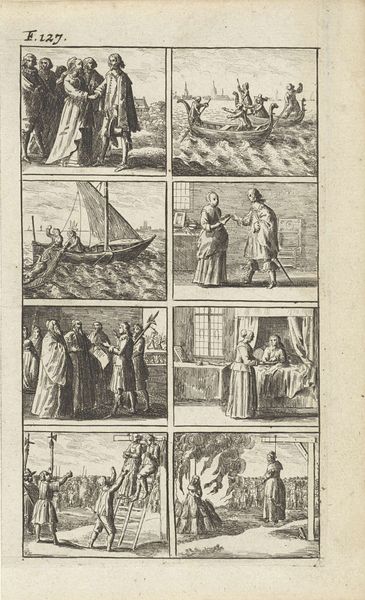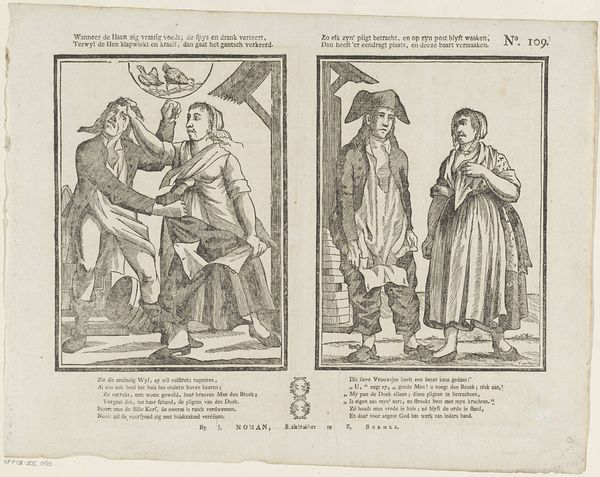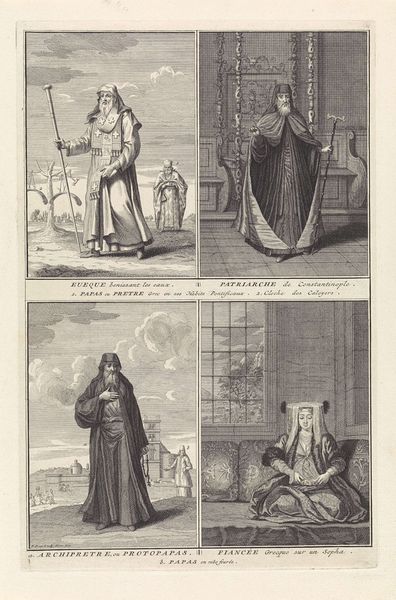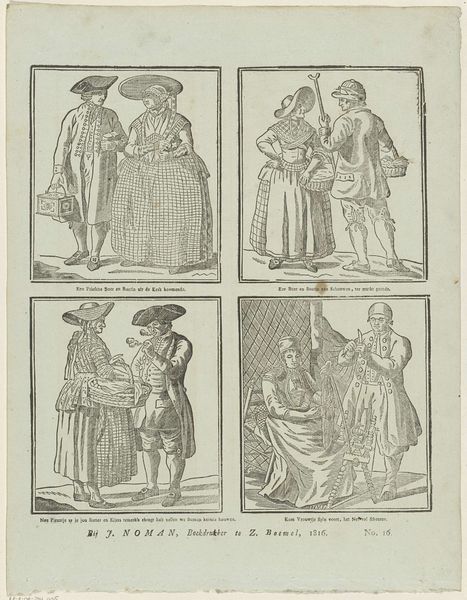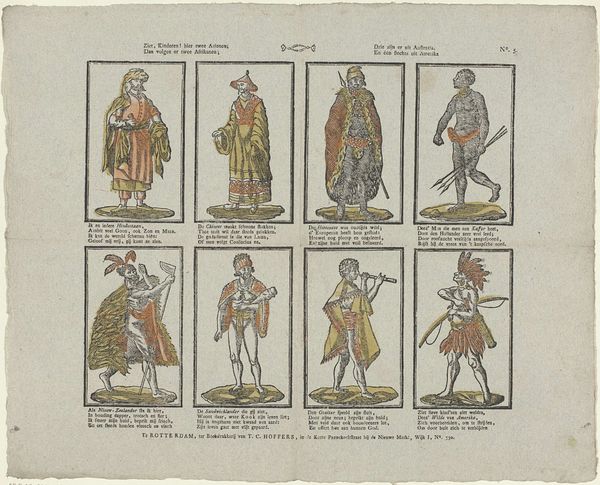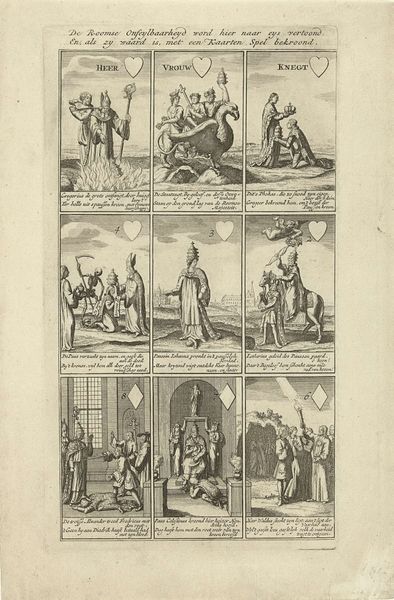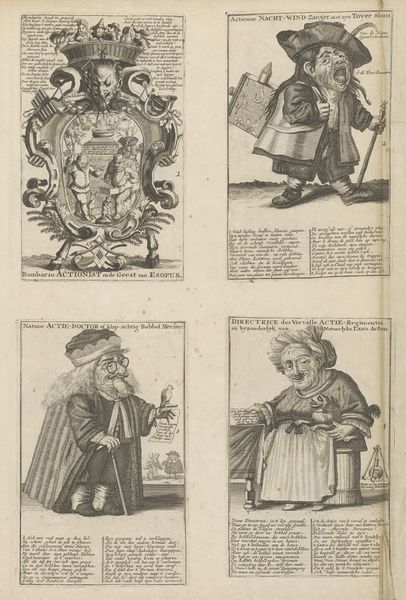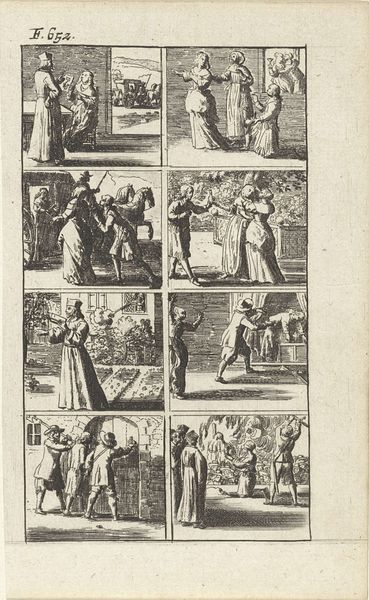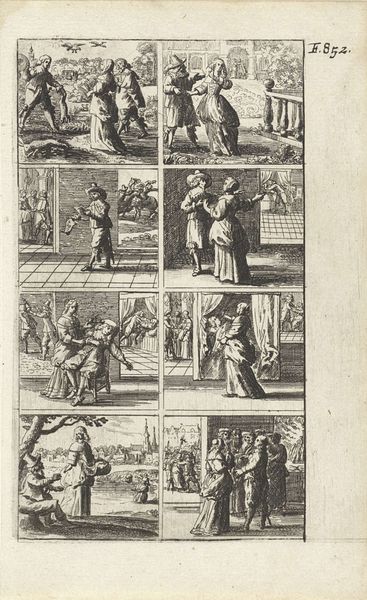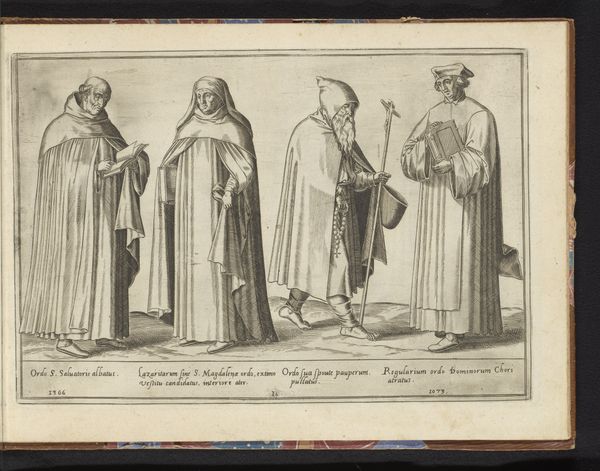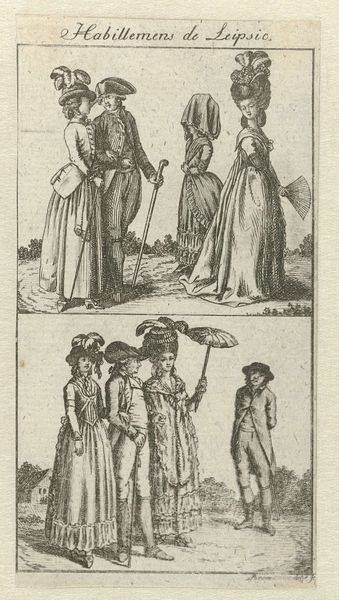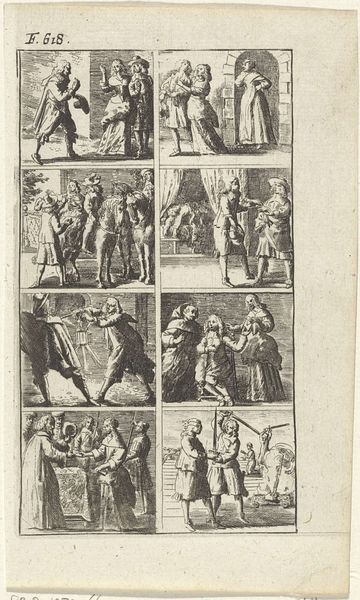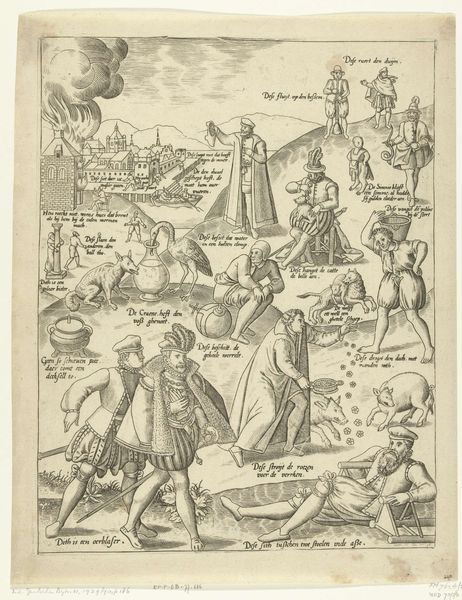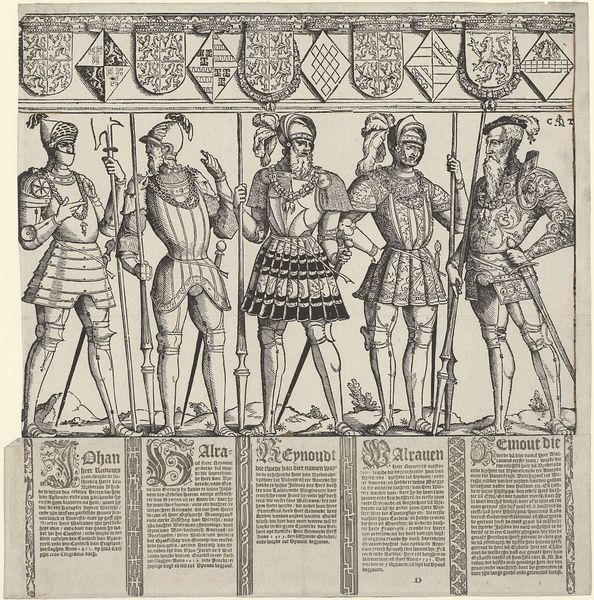
Hier ziet gy schepen die bereid, en vaardig zyn ten allen tyd 1761 - 1804
0:00
0:00
ervendeweduwejacobusvanegmont
Rijksmuseum
print, engraving
#
dutch-golden-age
# print
#
landscape
#
cityscape
#
history-painting
#
engraving
Dimensions: height 423 mm, width 336 mm
Copyright: Rijks Museum: Open Domain
Editor: We're looking at "Hier ziet gy Schepen die bereid, en vaardig zyn ten allen tyd," an engraving dating between 1761 and 1804. It’s attributed to Erven de Weduwe Jacobus van Egmont and held at the Rijksmuseum. It seems to be a collection of six smaller scenes, each with text. I’m initially struck by how each image seems to comment on different facets of Dutch society and life at the time. What do you see when you look at this print? Curator: The arrangement and captions give us immediate cues about the perceived virtues and perhaps anxieties of the time. Given its context as a widely distributed print, its function was clearly not just aesthetic. Consider the imagery of the ships versus the civic scenes; what values are promoted here? It strikes me that these images reflect an ongoing negotiation regarding the roles of commerce, military strength, and moral responsibility within Dutch society. Editor: So, you're saying it's less about literal depictions and more about conveying a message about Dutch identity? Curator: Precisely. Notice how each image is coupled with a caption. It invites the viewer to consider the relationship between each scene and its description, driving home the socio-political context. Think about how images of trade are used to bolster specific narratives related to wealth, morality, and national pride. Who would the audience have been, and how would they have reacted? Editor: The figures at the bottom do seem like clear references to class and social standing. How does the placement of the images impact the overall message? Curator: The positioning invites a reading from maritime strength and civic duty downwards towards the portrayal of its people and commercial interests. It prompts questions regarding social order, societal expectation, and individual roles within the larger Dutch enterprise. This was a society very concerned with projecting an image of strength and prosperity and policing the narratives that supported it. What broader social issues might these images allude to? Editor: I hadn't considered how constructed the images and text were. Now, I see that it provides glimpses into the values of the period, emphasizing trade, social hierarchy, and perhaps, even nationalistic sentiments. Thanks! Curator: Indeed. By understanding the print’s place within a specific time, location and purpose, its narrative and significance unfolds in new ways.
Comments
No comments
Be the first to comment and join the conversation on the ultimate creative platform.
